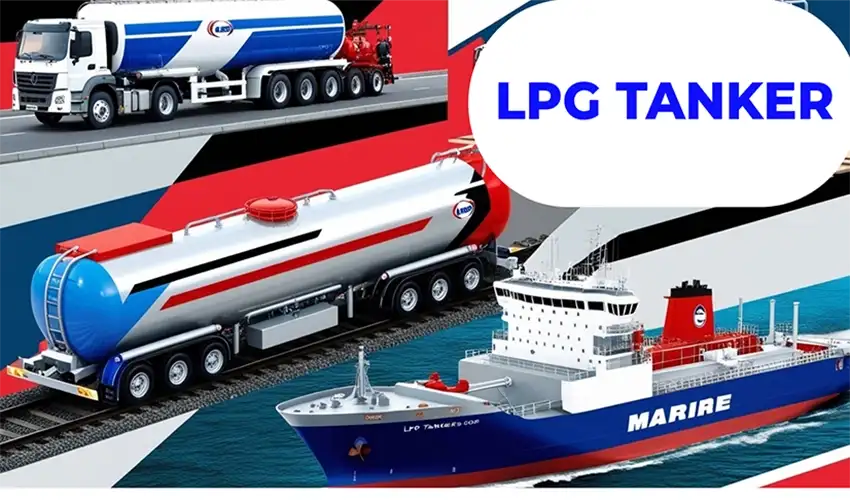The LPG tanker is one of the most critical vehicles in the energy industry, tasked with transporting highly flammable and explosive materials. The importance of safety and standardization in the design and construction of these tankers is undeniable due to the hazardous properties of liquefied petroleum gas, such as high pressure, flammability, and sensitivity to temperature changes. Even the slightest defect or failure to adhere to standard requirements in these tankers can lead to irreparable consequences, including explosions, leaks of hazardous materials, severe human and financial losses, and environmental damage.
This article provides a comprehensive review of the requirements and guidelines that must be followed in the design and construction of LPG tankers. From the materials and structure of the tank body to safety equipment and protocols for maintenance and periodic inspections, all key aspects contributing to the safety and efficiency of these tankers will be discussed. Additionally, the potential consequences of neglecting these standards will be addressed, along with an analysis of the critical importance of compliance with national and international regulations.
Types of LPG Transport Tankers
Road Tankers
Road tankers are used for transporting liquefied petroleum gas over short to medium distances. These tankers are typically mounted on heavy trucks, offering flexibility and easy access to various locations, making them ideal for distributing LPG to industrial and domestic consumers. The design of these tankers ensures they can withstand the high pressure of LPG and are made from corrosion-resistant materials to guarantee safety during transportation.
Marine Tankers (Gas Carrier Ships)
Gas carrier ships are used to transport large quantities of LPG between countries and continents. These ships feature massive, insulated tanks that maintain LPG at appropriate temperatures and pressures. Advanced technologies such as cooling systems and thermal insulation are employed to prevent gas evaporation. Safety is paramount in these tankers, and they are subject to stringent international regulations.
Rail Tankers
Rail tankers are designed for transporting LPG through railway networks. These tankers enable the movement of large volumes of LPG over long distances, offering cost-effective and efficient transportation solutions. The tanks are built to withstand the pressure and temperature of LPG and comply with safety standards. Utilizing rail transport also helps reduce road traffic and associated risks.
Design and Construction Requirements for LPG Transport Tankers
Tank Body Materials
The materials used for LPG transport tanker bodies must be high-strength carbon steel or pressure-resistant alloy steel to withstand working pressures ranging from 15 to 25 bar. Additionally, to prevent corrosion, the tank should be coated with anti-corrosion layers such as epoxy paints or galvanized coatings.
Since LPG is also transported at sub-zero temperatures, the materials used in the tank body must retain their mechanical properties under extremely low temperatures. In such cases, special steels like Low-Temperature Steel are used, which maintain their flexibility and strength at very low temperatures without becoming brittle.
Tank Design
Tanks are designed in cylindrical or spherical shapes to evenly distribute pressure in all directions. This design prevents stress concentration at specific points, reducing the risk of cracks. Additionally, pressure relief valves are installed on the tanks to control excess pressure by releasing some of the gas in case of unexpected pressure increases, thereby preventing structural damage.
Another critical factor in the design of LPG transport tankers is the type of welding and tank connections. The welds must withstand high pressure and temperature variations. Strict welding standards, such as ASME Section VIII for pressure vessels, are applied to ensure the tank’s safety and durability.
Inspection Tests for LPG Transport Tankers
To ensure the safety, durability, and performance of LPG transport tankers, a series of technical tests and inspections are conducted:
- Hydrostatic Test: The tank is filled with water and subjected to pressure exceeding the working pressure (usually 1.5 times the design pressure) to assess its resistance to high pressure. This test identifies cracks, leaks, or any structural weaknesses.
- Compressed Air Pressure Test: The tank is filled with compressed air or an inert gas such as nitrogen, and pressure changes are monitored to detect potential leaks. This method is often preferred in some cases due to lower risks compared to the hydrostatic test.
- Thickness Measurement Test: The tank wall thickness is measured using ultrasonic waves to ensure that corrosion or wear has not compromised the structural integrity.
- Leak Detection Test: The connections, valves, and welds are carefully inspected for any gas leaks. This test is typically conducted using helium or other inert gases.
- Visual Inspection: The tank and associated equipment are examined for surface damage such as cracks, rust, or corrosion to ensure there are no visible defects.
HSE Standards for LPG Transport Tankers (Health, Safety, and Environment)
HSE standards for LPG transport tankers are designed to ensure employee safety, prevent accidents, and minimize environmental impacts. These standards include the robust design of tanks in compliance with international standards (such as ASME and ADR), the installation of safety equipment such as pressure relief valves and leak detection systems, and the training of personnel for crisis management and adherence to safety protocols. Additionally, LPG transport tankers must undergo periodic inspections and utilize advanced equipment to prevent gas leaks and reduce the emission of harmful gases.

